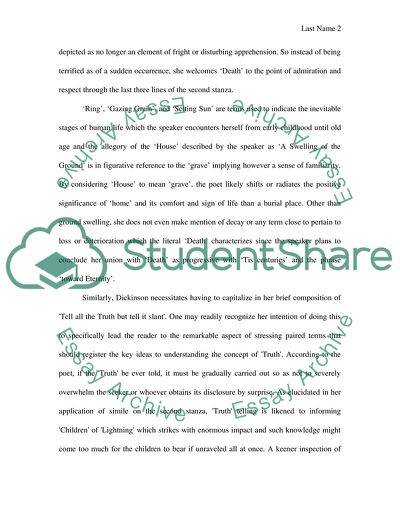Six Poems by Emily Dickinson Literature review Example | Topics and Well Written Essays - 1500 words. https://studentshare.org/literature/1753092-literature-analysis-of-poetry
Six Poems by Emily Dickinson Literature Review Example | Topics and Well Written Essays - 1500 Words. https://studentshare.org/literature/1753092-literature-analysis-of-poetry.


